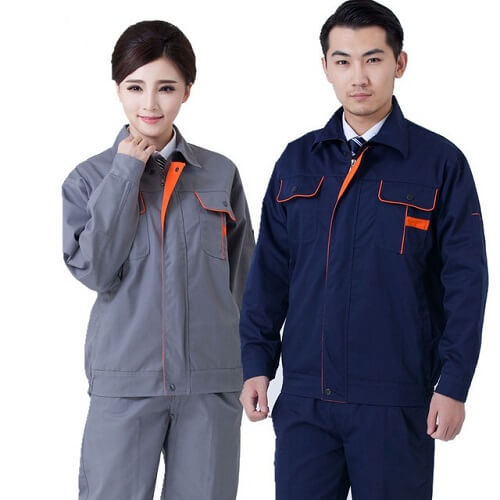
The uniforms should be inclusive and cater to individuals of all sizes. Try to strive for an equilibrium between your logo and the uniform. Imagine sitting in a long board meeting, and you feel either too hot or too cold.
However, wool also comes with adaptability, allowing comfort in warmer conditions by wicking moisture away from the body. Discover the new frontier of technology by using synthetic fabrics such as rayon and polyester.
But where and how big? The simpler the maintenance is, the more likely that the uniform will last in look and feel over time.
In the maze of fabrics selecting one that is in tune with the climate and formality of work is a skill that we can master today. The fabric you choose to clothing plays an important part in this choice.
Uniforms are much more than clothes. Cotton seems like the superhero in the fabric universe. The incorporation of a logo in a uniform is a craft as well as a trip.
The design should be flexible to ensure that wearers feel comfortable even in the most extreme environment conditions. Try to strive for harmoniousness between logos and the uniform.
Maintenance is the most important aspect. Innovative ideas and innovative approaches can lead to new horizons of brand recognition and visibility.
Colors guide emotions, while fonts guide perceptions. Perhaps a poly-cotton blend for toughness?

It’s not merely about creating a ‘look’, but weaving in elements that ensure day-long comfort. Innovative ideas and innovative approaches will help you discover new areas of brand recognition and visibility. However, when you are looking for aesthetics, practicality should not be overlooked.
A logo's size on the uniform is an important decision, just like selecting the size of the sails for your boat. Let's explore the mysteries of picking the appropriate fabric that will work with a variety of professional settings and the weather conditions.
Shoes that are comfortable, well-fitted and fit well with the uniform are vital. The color choice will affect the comfort for the wearer, particularly when it is exposed to various weather conditions.
Uniforms are not merely fabrics; they are canvases that tell the story of a brand. The design should be flexible and ensure that the wearers feel comfortable even in the most extreme environments.
It would be a tiring, exhausting day, wouldn't you think? This could be in the form of accessories or slight variations in design elements. By combining the strengths of various materials, blends such as cotton-polyester are durable, wrinkle-resistant and breathable.
Think about the climatic and environment conditions under which the uniform is to be put on. Allowing for subtle customizations can help wearers feel a sense of individuality while adhering to the broader uniform code.
By incorporating a dash of style and fashion-forward styles into uniforms will make them more appealing. But, wool is also a fabric with flexibility, allowing the wearer to feel comfortable in warmer climates by wicking away moisture off the human body.
However, consider their breathability and how they react to different temperatures before making a choice. A good fabric will provide the comfort of your guests, improves confidence and boosts productivity in the workplace.

As you walk out of your closet every morning, what thoughts are going through your thoughts? Who says uniforms have to be bland and boring? Uniforms aren't just clothes but are also canvasses which depict the story of the brand.
Shoes that are comfortable, well-fitted and match the outfit are crucial. Why?
Ergonomics makes sure that design is able to meet the body's needs to improve the comfort and efficiency of employees. It's similar to putting an flag on the top of a mountain in order to claim the visual space to represent your company.
Let's take off the sails to navigate the complex archipelago of uniform logo integration. Having titles on uniforms can make hierarchy and responsibilities clear, making interactions streamlined and effortless.
Get it right and your path to branding will be smooth and steady. It's about launching with solid design, wading through the various options for dimensions, layout and material, as well as making sure your brand's image is firmly on the hearts of your customers. If a logo is flawlessly in this canvas, it becomes an amazing display of visual appeal.
A uniform must allow the skin to breathe, absorb sweat, and be enduring enough to withstand daily wear and tear. But remember, not all heroes wear capes; sometimes they do require meticulous care like ironing and proper maintenance.
This ensures that everyone can have access to well-fitting and comfortable uniforms. Why is fabric important?
Cotton adapts well to various climates, keeping you cool during scorching summer days and acting as a decent insulator during the winter. Take a look ahead at the future trends and developments in the logo and designs.
The uniform you wear isn't a universal thing. Choosing a material that complements your logo ensures that it withstands the tides of time, wear, and weather. The wearers will be exposed to the sun's heat or at a desk with air conditioning?
Is it cotton for its ability to breathe? They subtly communicate the brand image and the vibe you wish to convey.
Cotton appears to be the super-hero in the fabric universe. Is it merely about names and titles, or is there a whole universe of options waiting to be explored?
Selecting a material that matches your logo will ensure that it will stand up to the forces of wear, time and the elements. They make sure that the uniform is a safe platform for the brand's journey.

When designing uniforms for marketing, consider the comfort and functionality of the attire, the visibility and placement of branding elements, and the choice of colors to ensure that it aligns with your brand's identity. It's also important to select materials suitable for the intended use.
Yes, most corporate uniform suppliers in Singapore offer customization options. Businesses can choose specific branding elements, such as logos, colors, slogans, and fabric options, to ensure that the uniforms align with their unique brand identity.
When selecting uniform suppliers, businesses should consider factors such as the supplier's reputation, quality of materials, customization options, pricing, lead times, ethical manufacturing practices, and adherence to sustainability goals, if applicable.